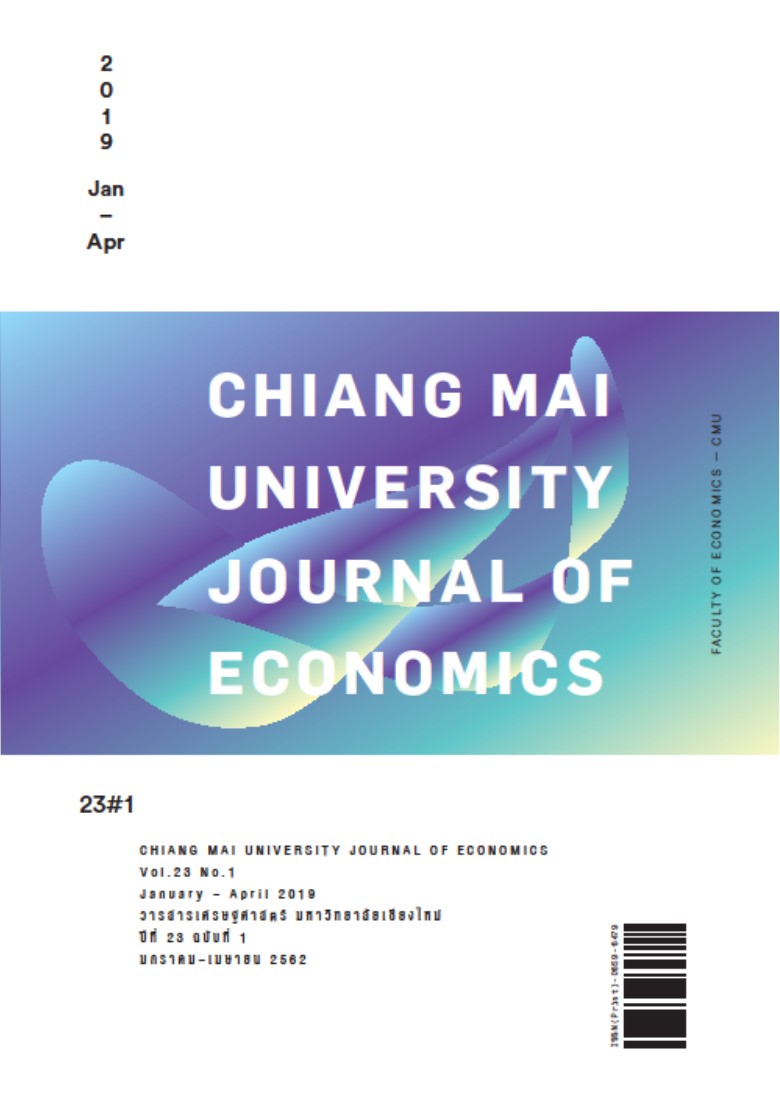The Strategies Management of Competitiveness of Vegetables Processing Business entrepreneurs in ASEAN Market
Keywords:
Strategy management, Competitiveness and Processing Vegetables businessAbstract
This research is s survey research. Aim of research purpose to search for a strategy for managing the competitiveness of export processed vegetable business in the ASEAN market. Using a combination of quantitative and qualitative research techniques. The sample group of the study was the executive of the processed vegetable business Medium and large about 200 people by using questionnaires for quantitative research and in-depth interview the executives of the business of processed vegetables that are successful in business for 12 people. As a result, (1) The potential of the basic processed vegetable business showed that processed vegetable business has sales close to the overall market, there is a concrete business strategy plan. They have investment to increase market potential and should improve the production process to be more advanced than competitors. In the communication ability of the management team, it was found that they are good communication in English, knowledge and understanding about more than 5 countries in ASEAN and trade, investment, exchange of goods in ASEAN countries. (2) The level of strategy to support changes in external factors found that medium business and large business focus on technology development strategies and innovations. (3) Analysis of the influence of competitive management strategies that affect the achievement of processed vegetable business found the marketing strategy has an influence on the achievement of processed vegetable business on profit increase and the number of activities that have received quality awards With statistical significance at the level of 0.05, And business management strategies for innovation Has an influence on the achievement of the processed vegetable business on sales increase With statistical significance at the level of 0.05. (4) The business model must aim to be a business that has developed technology and innovation, especially product innovation and innovation in the production process.
References
ค้นจาก http://www2.moc.go.th
สถาบันอาหาร. (2557). บทสรุปอุตสาหกรรมอาหารไทยปี 2557 และแนวโน้ม ปี 2558
ค้นจาก http://fic.nfi.or.th/foodindustry_quarterlySituation_detail.php?smid=389
สุจิตราภรณ์ จุสปาโล.(2555). กลยุทธ์องค์การธุรกิจและการดำเนินงานขององค์การตามแนวทางรางวัลคุณภาพแห่งชาติเพื่อเพิ่มสมรรถนะในการแข่งขัน.สุทธิปริทัศน์ คณะบริหารธุรกิจ มหาวิทยาลัยหาดใหญ่
สำนักงานปลัดกระทรวงพาณิชย์. (2556). การส่งออกของไทยก้าวไปกับ AEC. กระทรวงพาณิชย์.
จาก http://www.nic.go.th/gsic/e-book/Article-Thai-Export/Article-Thai-Export.pdf.
สำนักงานเศรษฐกิจการเกษตร. (2560). สถิติการค้าสินค้าเกษตรไทยกับต่างประเทศปี 2560. ค้นจาก
http://www.oae.go.th/assets/portals/1/files/jounal/2561/thailandtradestat2560.pdf
สำนักงานเศรษฐกิจการเกษตร. (2560). ตัวชี้วัดเศรษฐกิจการเกษตรของประเทศไทย ปี 2560. ค้นจาก
http://www.oae.go.th/assets/portals/1/files/jounal/2561/indicator2560.pdf
Birkinshaw, J., and Mol, M.J. (2006). How Management Innovation Happens, MIT Sloan Management Review, 47, 4, pp 81-88.
Carey Ann Wolanin. (2013). Intensity of Adoption of Direct Marketing Strategies among Fruit and Vegetable Farmers in Tennessee, University of Tennessee, Knoxville Trace: Tennessee research and creative exchange, Masters Theses 5-2013, pp.1-39
Cronbach, L. J. (1990). Essentials of psychology testing. (5th ed). New York: Harper
Collins Publishers.
Govindarajan, V. and Trimble, C. (2005). Organizational DNA for Strategic Innovation. California Management Review, vol. 47, No. 3, Spring, pp 47-76.
Kotler P. and Lee N. (2004). Corporate Social Responsibility: Doing the Most
Good for Your Company and Your Cause, John Wiley & Sons, New York
Kotler and Armstrong. (2009). Principles of marketing. Upper Saddle Review, NJ: Prentice Hall.
Kotler p., and Nancy Lee (2004). Corporate Social Responsibility: Doing the most good for your company and your cause, John Wiley & Sons, New York, 2004.
Lederman, D. (2010). An International Multilevel Analysis of Product Innovation. Journal of
International Business Studies, Vol. 41, No.4, pp 606-619.
Martin, R. and Sunley, P.,(2003). ‘Deconstructing clusters: chaotic concept or policy panacea?’ Journal of Economic Geography, 3: 5-35.
Novelli, Marina, Schmitz, B. and Spencer, T. (2006). Networks, clusters and innovation in tourism: a UK experience tourism management, 27 (6). pp. 1141-1152
Porter, M.E. (1990). Competitive Advantage. Free Press, New York, 1985
Sutopo, Hisjam and Yuniaristanto. (2012). An Agri-food supply chain model to
empower farmers as supplier for modern retailer using corporate social responsibility activities on deteriorate product. IAENG Transactions on Engineering Technologies,
pp 189-202.
Setsoafia, Sarpong and Kwadzo (2013). Determinants of direct marketing strategy
adoption by Agro SMEs’ in the greater Accra region, Ghana Asian Journal of Agricultural Extension, Economics & Sociology, 2(2), 105-117.
Swati Srivastava Dr. H. P. Mathur and Mayank Kumar. 2013, Competitive Advantage & Value Chain Analysis of Small Scale Fruits & Vegetable Processing Industry. International Journal of Logistic & Supply Chain Management Perspective, Volume 2, Number 4, October – December 2013, pp. 778-790.
Tavonga Njaya. (2014). The Economic of Fruit and Vegetable Marketing by Smallholder farmers in murehwa and mutoko districts in Zimbabwe. International journal of research in humanities and social sciences, Volume 1, Issue 1, November 2014, pp 35-43.
Wimolnit, Noppadhol. (2011). An Approach to Strategic Management for Sustainable Growth of
Exported Fruits Production Business in Chanthaburi Province.
Downloads
Published
Issue
Section
License
All opinions and contents in the CMJE are the responsibility of the author(s). Chiang Mai University Journal of Economics reserves the copyright for all published materials. Papers may not be reproduced in any form without the written permission from Chiang Mai University Journal of Economics.
ข้อคิดเห็นที่ปรากฏและแสดงในเนื้อหาบทความต่างๆในวารสารเศรษฐศาสตร์มหาวิทยาลัยเชียงใหม่ ถือเป็นความเห็นและความรับผิดชอบโดยตรงของผู้เขียนบทความนั้นๆ มิใช่เป็นความเห็นและความรับผิดชอบใดๆของวารสารเศรษฐศาสตร์ มหาวิทยาลัยเชียงใหม่
บทความ เนื้อหา และข้อมูล ฯลฯ ในวารสารเศรษฐศาสตร์มหาวิทยาลัยเชียงใหม่ ถือเป็นลิขสิทธิ์เฉพาะของคณะเศรษฐศาสตร์มหาวิทยาลัยเชียงใหม่ หากบุคคลหรือหน่วยงานใดต้องการนำทั้งหมดหรือส่วนหนึ่งส่วนใดไปเผยแพร่ต่อหรือเพื่อกระทำการใดๆ จะต้องได้รับอนุญาตเป็นลายลักษณ์อักษร จากวารสารเศรษฐศาสตร์ มหาวิทยาลัยเชียงใหม่





